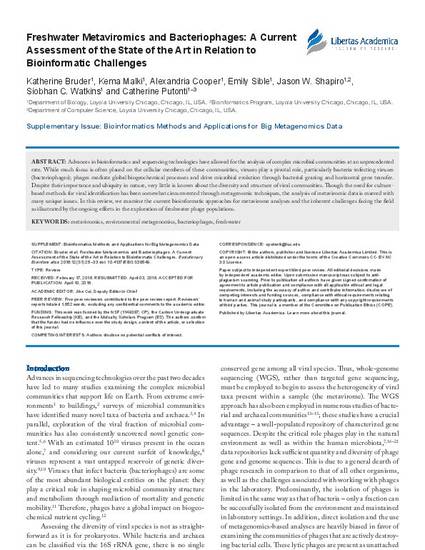
Advances in bioinformatics and sequencing technologies have allowed for the analysis of complex microbial communities at an unprecedented rate. While much focus is often placed on the cellular members of these communities, viruses play a pivotal role, particularly bacteria-infecting viruses (bacteriophages); phages mediate global biogeochemical processes and drive microbial evolution through bacterial grazing and horizontal gene transfer. Despite their importance and ubiquity in nature, very little is known about the diversity and structure of viral communities. Though the need for culture-based methods for viral identification has been somewhat circumvented through metagenomic techniques, the analysis of metaviromic data is marred with many unique issues. In this review, we examine the current bioinformatic approaches for metavirome analyses and the inherent challenges facing the field as illustrated by the ongoing efforts in the exploration of freshwater phage populations.
© The authors, publisher and licensee Libertas Academica Limited. This is an open-access article distributed under the terms of the Creative Commons CC-BY-NC3.0 License.
Available at: http://works.bepress.com/catherine-putonti/20/

Author Posting © Libertas Academica, 2016. This article is posted here by permission of Libertas Academica for personal use, not for redistribution. The article was published in Evolutionary Bioinformatics, Suppl 1, June 20, 2016, http://dx.doi.org/10.4137/EBO.S38549%20